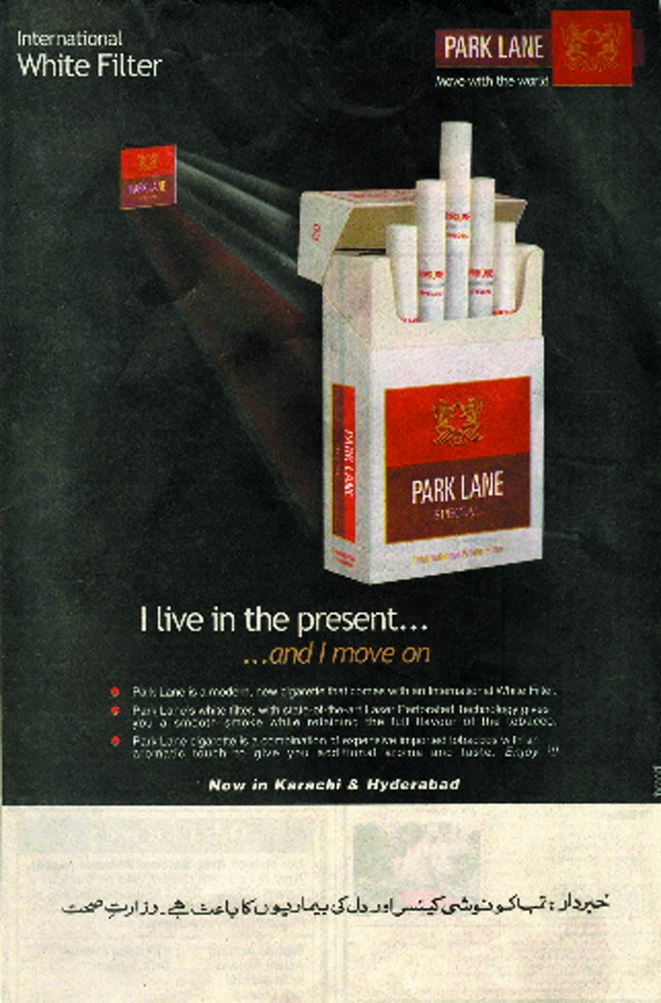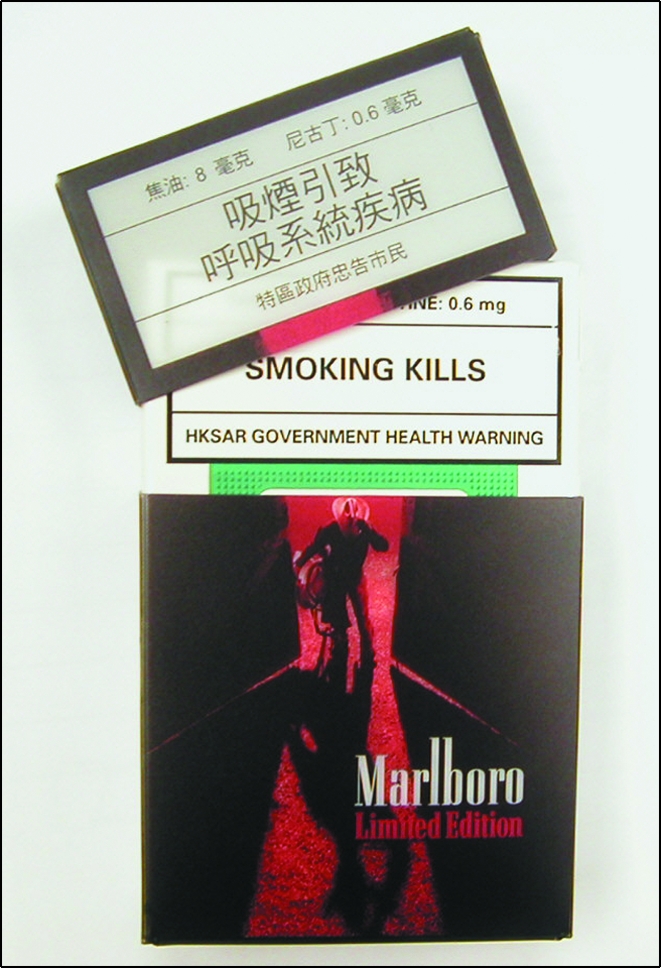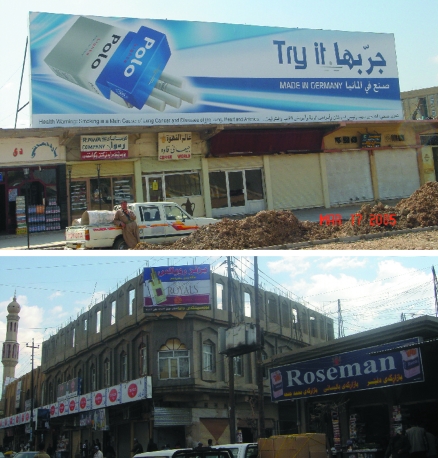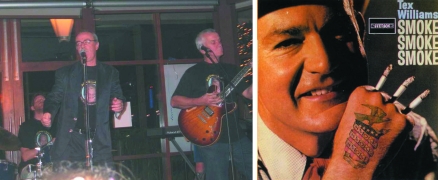Iraq: an important start in the Kurdish region
All articles written by David Simpson unless otherwise attributed. Ideas and items for News Analysis should be sent to: d.simpson@iath.org
In a time of great difficulty in Iraq, during which most coverage of it in the world's media is dominated by security issues, it is easy not to realise that wherever possible, at least in the more secure areas, Iraqi people are trying to get on with their lives and work. For public health officials, this includes the formidable challenge of tobacco control which, due to the virtual absence of activity by the former regime, effectively means starting from scratch.
The Kurdish region, regarded as the most secure part of the country, has been a federal state within Iraq since October 2005. Five and a half million people live there, some 80% of them ethnic Kurds and 15% Arabs, a direct reversal of the proportions of ethnic groups for Iraq as a whole. Life expectancy at birth is 61.4 years for men and 64.9 for women; among the top five causes of mortality and morbidity are cardiovascular disease, cancer, respiratory disease, and hypertension, with smoking, unsurprisingly, a significant factor.
Current laws include a ban on smoking in all government buildings, but it is widely disregarded and smoking can be seen everywhere, from hospitals and health clinics to schools and administrative office buildings. Although tobacco advertising is banned on television and in mass media, most people have satellite televisions with access to channels from every country in the region, many of them still carrying tobacco advertising, emphasising the urgent need for regional collaboration. Meanwhile, there are still plenty of highly visible tobacco advertisements on billboards, especially giant ones beside main roads and in downtown areas of the cities, as well as in shops and tobacco vendors' stands.
In Iraq, there are plenty of highly visible tobacco advertisements on billboards.
Even among the relatively low earning mass of the population, smoking is easily affordable. While a pack of Marlboro Lights is around US$2, much cheaper brands are the popular choice—around US$0.40c for brands imported from South Korea, for example. They are available all over the Kurdish region, freely sold to minors, and the low price is accounted for by the absence of any kind of duty or import tax. Water pipe smoking is also popular, especially among students and other young people of similar age, who generally believe it to be harmless. Water pipes are readily available in restaurants and internet cafés, accessible to the 70% of the population who live in urban areas.
As in any serious tobacco control programme, the regional government's health ministry knows that baseline data is essential, and gathering this has occupied much of its initial efforts and resources. With collaboration and support from the World Health Organization and the US Office on Smoking and Health, three standardised surveys are already well advanced: the global youth tobacco and school personnel surveys, and the health professional survey, the latter conducted among third year students of medicine, dentistry, pharmacy, and nursing.
Meanwhile, the ministry sent an anonymous survey to 850 doctors in August, and the 95% response produced a wealth of useful information. Smoking prevalence was 18% among males, and 6% among females, with more than 90% of both smokers and non‐smokers agreeing that smoking was harmful, and 98% of non‐smokers and 52% of smokers also agreeing that it should be banned in hospitals and schools. However, it emerged that only 5% of doctors recommended their patients to stop smoking, with 96% pleading lack of training for this role, and a similar proportion noting that cessation pharmaceuticals were unavailable. The results only confirmed doctors as one of the health ministry tobacco control team's top priority targets.
So far, knowledge about the smoking prevalence of the general population is less clear, at least for males. 1990 estimates put it at 40% for males and 5% for females, though a recent (May 2005) cervical cancer survey reported a figure of 8%, despite cultural and Muslim taboos on Kurdish women smoking. The confidential setting of the survey, by primary health care providers, means the result is likely to be accurate. As the region's fortunes improve, the still large majority of non‐smoking women are considered likely to become a target for tobacco manufacturers.
Among the many challenges facing the tobacco team is a lack of human resources: there are no professional or non‐governmental organisations interested in helping. Just in time alone this is limiting—for example, all the survey work was carried out by doctors in the public health sector, often involving travel over considerable distances, some of it requiring roundabout routes to avoid less secure areas. The health ministry has appointed an official to be responsible for its programme, and two staff are currently being trained with assistance from Egyptian and US health institutes. As the programme proceeds from data gathering to the education of health professionals and the general public, each stage will no doubt identify additional tasks and decisions. Whether it be regional collaboration, radical revision of a medical syllabus unchanged over the last two to three decades, or the development of tobacco education materials (with the added work and expense of there being two main Kurdish dialects), every task will require staff input as well as the framework of an agreed policy.
There are many unknowns ahead—for example, how much has the long experience of war, insurgency, and the stress of living without electricity, and the many other hardships of the Kurdish region's recent past, affected people's smoking behaviour and attitudes? Can people be persuaded to try to stop smoking after living so long with not knowing what tomorrow will bring? And how difficult will it be to address passive smoking, when typical households comprise extended families where up to five adults smoke? It is an important issue, too, when the leading cause of mortality in children under 5 years old is respiratory disease.
The Kurdish region clearly faces a big challenge, but at least work has begun. The regional government will be sending delegates to the World Conference on Tobacco and Health in Washington DC next July. It is to be hoped that colleagues from all over the world will be interested in their experience, and that some will be able to offer support and continuing collaboration in return.

Miniscule print is used for the health warning in this advertisement for Park Lane cigarettes, leaving white space to occupy the legally required proportion of the total ad.
DILYARA BARZANI
Kurdistan Region, Iraq
dr.barzani@consultant.com
Pakistan: health warnings, industry‐style
Big tobacco companies are now so keen to admit smoking is harmful on their websites, that it is surprising how modest their subsidiaries can be in their advertisements. A recent advertising campaign for Park Lane cigarettes starkly illustrated this, as well as the futility of allowing the industry to influence tobacco control policy. The campaign included large scale ads in print media, as well as billboards, a medium that has become of significantly more interest to tobacco companies since the introduction of an embargo on cigarette advertisements on television before midnight.
Park Lane is made by Lakson, part owned by Philip Morris, and all the cunning of the western world's largest cigarette maker was evident in the ads. Not only did they associate cigarettes with desirable names and images, particularly in the minds of young people who have money to spend, but minimised the statutory health warning to the point of uselessness. The law requires 20% of the space occupied by a tobacco advertisement to be given over to the warning. However, the government made the fatal mistake, against the oft repeated advice of health experts, of involving tobacco companies in framing the law. Not surprisingly, it failed to specify the size of the font relative to the space occupied by the warning.
The result is obvious. Tobacco companies allocate the correct proportion of the total advertisement for the warning, but leave much of it blank, printing the warning in such small font that it is barely legible. This is particularly true for billboards, where often it cannot be read from a distance. Pakistan has both signed and ratified the World Health Organization's Framework Convention on Tobacco Control (FCTC), but has so far taken no practical steps towards implementation.
With the existing law as a precedent, and increasing evidence that tobacco companies believe they can maintain business as usual by, among other ploys, giving a little “help” to governments to draft their FCTC related laws, the prospects for reversing Pakistan's tobacco epidemic do not look good.
Sweden: ads snuffed out
Scanorama, the in‐flight magazine of the Scandinavian airline SAS, is to stop carrying advertisements for Swedish oral snuff, snus. That commitment was made by chief editor Jan Kotschack in response to an inquiry from the Swedish Consumer Agency (SCA), a government agency, after three advertisements for snus in the July/August 2005 edition of the magazine were reported for violating the Swedish tobacco law.
A written statement issued by SCA on 1 November pointed out that the marketing of tobacco products with commercial announcements in periodical publications is prohibited under the law. Mr Kotschack replied that SAS Media, publisher of Scanorama, did not completely agree with SCA that the snus advertisements violated the law, in view of the magazine being distributed primarily on international flights and its contents, although focusing on Scandinavian issues, being directed primarily to an international audience.
The issue of advertising for tobacco and alcohol products in Scanorama was reviewed in 1989 by the Swedish Market Court, following a complaint filed by SCA. The court found that the Swedish regulations on tobacco and alcohol advertising that were in effect at the time were not applicable, due to the clearly international character of the magazine.
Since that ruling, several provisions of the tobacco law have been changed, with effect from 1 July 2005. The changes are based on, among other things, European Union (EU) directive 2003/33/EG, which requires all EU member states to prohibit advertising of tobacco products in magazines and other printed publications by 31 July 2005. The only exceptions are trade journals, and publications printed and distributed in third countries and not intended for EU member states. Accordingly, the SCA views snus advertising as violating regulations that apply not only to Sweden, but to all EU member states.
Scanorama also has a Japanese version and may eventually be published in other languages too, reflecting the fact, it points out, that international travellers comprise its principal target audience. Nevertheless, it says it will discontinue snus advertisements in compliance with SCA's demand. The SCA has decided not to pursue the case to court, accepting instead the voluntary withdrawal of the ads. However, it does not accept the magazine's view that the ads were not directed to Swedish passengers. It remains to be seen what will happen if they start appearing in foreign language versions of the magazine.
Part of the 60 000 crowd exercising together against smoking in Bangkok, Thailand.
CARL‐OLOF RYDéN
Editor, www.tobaksfakta.org, Sweden
c‐o.ryden@telia.com
Thailand: mass exercise, petition, and lure‐free points of sale
Sixty thousand people exercising together against smoking at the Great Lawn near the Grand Palace in Bangkok make an impressive sight. Collecting the signatures of nine million of the country's 11.3 million smokers on a petition to quit or reduce smoking is a remarkable feat. But impressive as these accomplishments are, the greatest achievement in Thailand last November was getting the estimated 500 000 retailers who sell manufactured cigarettes all over Thailand to keep them out of sight (see Tobacco Control 2005;14:367).
Thai law prohibits advertising, but when it was passed in 1992 the tobacco companies almost immediately redefined it by exploiting various point of purchase mechanisms. By 2000, a study of point of purchase advertising showed an average of seven point of purchase elements at each retail shop observed. Today, due to the public health ministry's efforts, these elements, including the walls of cigarette packs behind cash registers, have all been removed and all tobacco goods placed under the counter or in special storage closets until requested by a customer.
These accomplishments are only the more visible of the many legal and health promotion actions that are moving Thailand to lower and lower smoking rates. The overall movement against smoking is gaining momentum because of new restrictions on smoking in public places, and efforts by health professionals to be sure that smokers are provided with both advice and nicotine replacement therapy such as nicotine gum at pharmacies, where Thai people often go for medical advice and common medicines. Not only is smoking becoming unpopular, but healthy attitudes and activities are increasing. Thailand is aware of its opportunity and is determined that these positive trends will continue.

Spain: first medal of honour remembers Sir Richard Doll In November, the board of the Spanish national coalition on tobacco dependence held its fifth national conference on tobacco and health. The timing was of critical importance, as parliament was considering a comprehensive tobacco control bill from the health ministry. The late Sir Richard Doll had accepted the board's invitation to be a speaker, and was looking forward to visiting Salamanca, historic venue of the conference, and adding his weight to pressure for the strongest possible bill. The committee decided to make the first ever award of a medal of honour to him, and after his death in July, arranged for one of Sir Richard's colleagues to collect it on behalf of his family.
STEPHEN HAMANN
ThaiHealth, Bangkok, Thailand
slhamann@hotmail.com
South Korea: smoke and dye
The sensitivities of those who work with cigarettes are sometimes hard to fathom. Take Kim Il Sung, 31, a no doubt gifted artist from South Korea, for example. Her recent contributions to the visual arts have included a range of paintings reduced in size to fit on a cigarette paper. A graduate of biology and former employee of a cancer research institute, she is reportedly a non‐smoker because she is worried about becoming addicted. Nevertheless, she hit upon her unusual medium after feeling pity for women she saw having to sneak off to the toilets in public buildings in order to smoke, away from what she called the “prejudiced gaze” of others. She felt she could help them become more open about their smoking, through her art.
However, when Kim approached a cigarette company to suggest the logical next stage, that her art works should become the real thing and be made, sold and smoked, the response she got was as surprising as her own apparently confused attitudes to smoking. The manufacturers were concerned that the paints could be harmful.
This touching concern for the health of customers is nothing new. About a quarter of a century ago, a British health education poster featured a close up photograph of someone smoking a cigarette with the health warning printed along the length of the white paper of the cigarette, with the caption, “Would you ignore it if it was under your nose?”. Inspired by this idea, a tobacco control advocate persuaded a progressive health minister engaged in “voluntary agreement” negotiations with tobacco companies to ask them to place such warnings on every cigarette. Realising immediately the utter desecration this would wreak on the iconic white purity of their product, tobacco executives could only swallow hard and promise to look into it. At the next round of negotiations, they solemnly reported that their scientists could never permit such a move—in case the burned printing ink was carcinogenic!

In Hong Kong, Philip Morris has introduced a reusable plastic outer cover for its Marlboro cigarette packs, which could hide future graphic health warnings.
Hong Kong, China: Marlboro pack sleeves
As everyone knows, one of the best and often the earliest evaluation of the effectiveness of any tobacco control measure is the strength of tobacco companies' resistance to it. In the case of graphic health warnings on cigarette packs, the industry's insistence that they have no effect is somewhat devalued by numerous resistance strategies. The latest comes from Hong Kong, where Philip Morris has introduced a plastic outer cover to its Marlboro cigarette packs. It comes in two parts, to allow the upper section, bearing the same health warnings as those printed in the same position on the actual pack, to be removed for access to the pack and the cigarettes. The most striking feature of the new cover is a series of images, featuring the unwelcome return of the Marlboro cowboy, whom the government thought it had long since sent off into the sunset.
The idea seems to work like this. Hong Kong is planning to introduce its own set of graphic warnings soon, despite strenuous industry work to convince the government they do not work. They do actually work, so the best damage limitation exercise is to produce a nice outer skin, tough enough to last for years, that can be slipped over the new, unsightly packs when they arrive, to blot out the graphic warnings. Better yet, the covers can have the cowboy on them. He may have been banished from the pack, as an icon that makes Marlboro attractive to the young, not to mention the insecure, downtrodden, humdrum sort of person who buys into the free, wandering, macho cowboy myth—but this isn't the pack, it's just a plastic cover. The law says nothing about them.
Australia: enough to start kids smoking At the 3rd Australian Tobacco Control Conference in Sydney in November, delegates were entertained by a short set from tobacco control supergroup Puff Daddy and the Rockin' Rollies. Guitarist Stafford Sanders (ASH), drummer Paul Grogan (Cancer Council Australia), keyboarder Trish Kirby (long suffering wife of Tobacco Control editor Simon Chapman) joined Simon and two musician friends for five tobacco themed songs, including Tex Williams' Smoke! Smoke! Smoke that cigarette. Williams (1917–1985) died of lung cancer aged just 68. Tobacco Control has been unable to confirm reports that the managements of U2, the Rolling Stones, and Bruce Springsteen issued a joint statement, interpreted by experienced music industry watchers as indicating the groups' deep concern: “These people say they are worried about smoking being bad for health, but they obviously care nothing about harming people's ears.”
In the past, government officials in Hong Kong have shown they are not best pleased by cigarette companies deliberately circumventing their regulations. Since becoming a special administrative region (SAR) of China, they have had fewer challenges than in the former colonial days, when Hong Kong was leapfrogging its way from being the world's most exciting adventure playground for young tobacco advertisers, to one of the region's model tobacco control centres. Just how the SAR government handles this provocative new challenge remains to be seen.
Sweden: cockroach of the year
We have all heard of anti‐prizes awarded to highlight particularly bad behaviour by the tobacco industry or its executives—often they are in the USA and feature the word “Butt”—but the “Cockroach of the year” award was new to many when it scuttled into the limelight recently. It is something Swedish colleagues working on the Non‐Smoking Generation project have devised, and for 2005, the winner was the unfortunate Professor Ragnar Rylander, who sprang to prominence due to his apparent capacity for forgetting how much he had done behind the scenes to help Philip Morris.
The decision was made on a large youth community internet website called Lunarstorm, and around 12 000 people voted. Other, unsuccessful nominees included an executive of the advertising agency McCann‐Erikson's Swedish branch, who sits on the board of a snus manufacturer (with the appropriate sounding name Skruf); a member of a hospital board who is also on the board of Swedish Match; and a television executive who makes “docusoap” programmes featuring young people smoking and drinking, which go out in the daytime when many children watch television. Perhaps every country should have an anti‐award for those who put tobacco before health. Any suggestions for titles?





